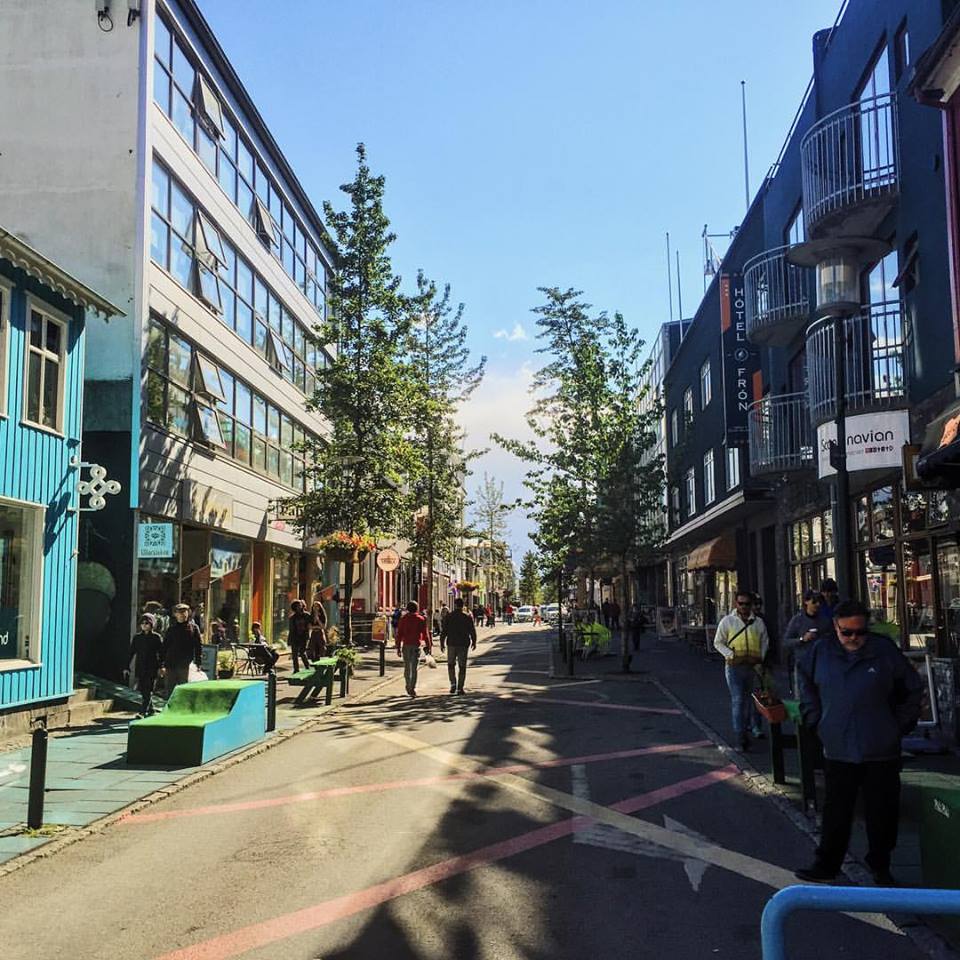For those of you who regularly read this blog, you know that I’ve been looking forward to going back to Iceland, having stopped in Reykjavik for 36 hours on a layover to my study abroad program in the fall of 2016. Three years ago, I didn’t have near enough time to travel to all of the areas of Iceland that I’d heard so much about. I promised myself that I’d come back, and when I mentioned this to my Dad, we decided to make this a Father/Son trip.
The last blog post, Preparing for a Backpacking Trip to Iceland, outlined what it took for my Dad and me to prepare for the trip. Now, I’d like to tell you about our epic trip in August!
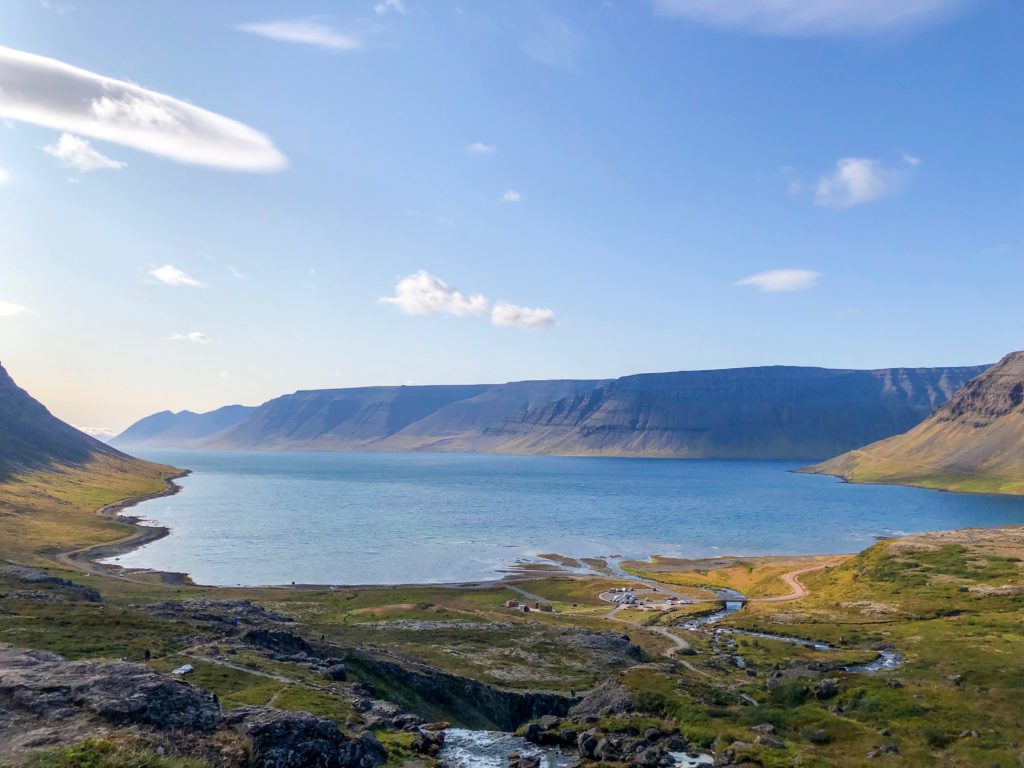
Icelandair
We flew Icelandair just like I flew back in 2016. I confirmed their policy of not serving peanuts on board the airplane. I didn’t ask for any announcement to be made, and pre-boarding wasn’t necessary for me since I had plenty of time to wipe down my seat and tray table. They do sell food on board, but I really wasn’t worried about it since we took an overnight direct flight from Denver to Reykjavik. I figured that not many people were going to eat. And if I had a seatmate who pulled out peanuts or my other allergens (tree nuts, sesame, fish or shellfish), I wouldn’t have had any problem asking him/her to please put them away.
On our flight home, an announcement was made asking passengers to not eat nuts during the flight, so there was someone else on board with an allergy. It was nice to know that they would make that announcement!
Eating Out at Restaurants
Once we arrived in Reykjavik, we got our rental car, our backpacks that we had checked as baggage, and we went out to eat brunch. We ate out a few times in our two weeks in Iceland, and in general I can say that restaurant food is very expensive. After all, most foods have to be imported into the country. Their specialty is lamb, which was a staple on almost every restaurant menu. There are sheep everywhere on the island. One restaurant even had the sign, “Free Range since 876!” – the year that Iceland became a country. We did have lamb one night in a ‘gastropub’ which is kind of a mix between a bar and a restaurant. It was delicious!
Having been in a Scandinavian country in 2016 – I did a research project in Copenhagen, Denmark for a month prior to studying abroad – I knew that breads were going to be difficult for me to eat because of my sesame allergy. Iceland was no different. The bread provided in restaurants, and those that we found in grocery stores all contained or stated “made in a factory” with sesame. Their bread is kind of bland, so sesame and other seeds are used to add flavor. So, no bread for me!
Iceland also has a great fishing industry. My Dad had decided prior to our trip that he wasn’t going to eat any fish while we were camping or in a restaurant, since I have such a severe allergy to fish having had anaphylaxis in the past to one bite of trout. Every restaurant we ate at also had fish on the menu, but the ones we chose (and believe me, we only ate out about five meals the entire vacation), didn’t have fish as the main item on the menu. I was able to find waffles for our first brunch in the country, which were delicious.
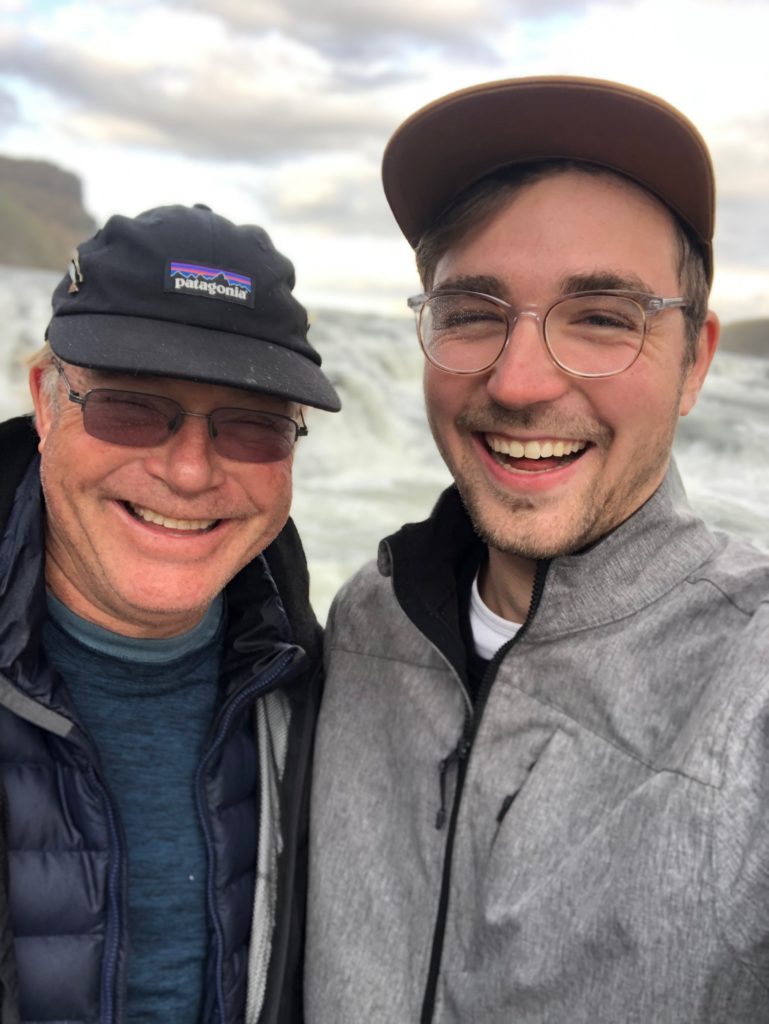
All of the wait staff in the restaurants spoke English very well, so I didn’t have any difficulty communicating about my food allergies and how to keep me safe from cross contact. Many of the wait staff were from different countries, and were temporary summer workers. It was great to find out where they hailed from – Czechoslovakia and Denmark were the home countries of two of our waiters.
One night we went out for hamburgers, which were great. When the bill came for $50 US dollars, we realized that cows weren’t habitants in the country, so the meat had to be imported causing the price to be so extremely high!
Most restaurants had a local favorite, Smørrebrød, on their menu. This is an open-faced sandwich cuisine popular across most Scandinavian countries, and many have fish on top. Of course, with the bread also being unsafe, the combination of two of my allergens meant it was definitely not the meal for me!
Food for Camping
We brought Mountain House freeze dried foods for all of our dinners at the campsites which could be prepared in about 10 minutes using a JetBoil and boiling water. These meals saved us money on food, and also made it easy at our campsites to prepare dinner when it was windy or rainy. By the end of the trip, we realized we bought too many Chicken & Rice meals and were begging for some variety… but at least it made dinners easy throughout our trip!
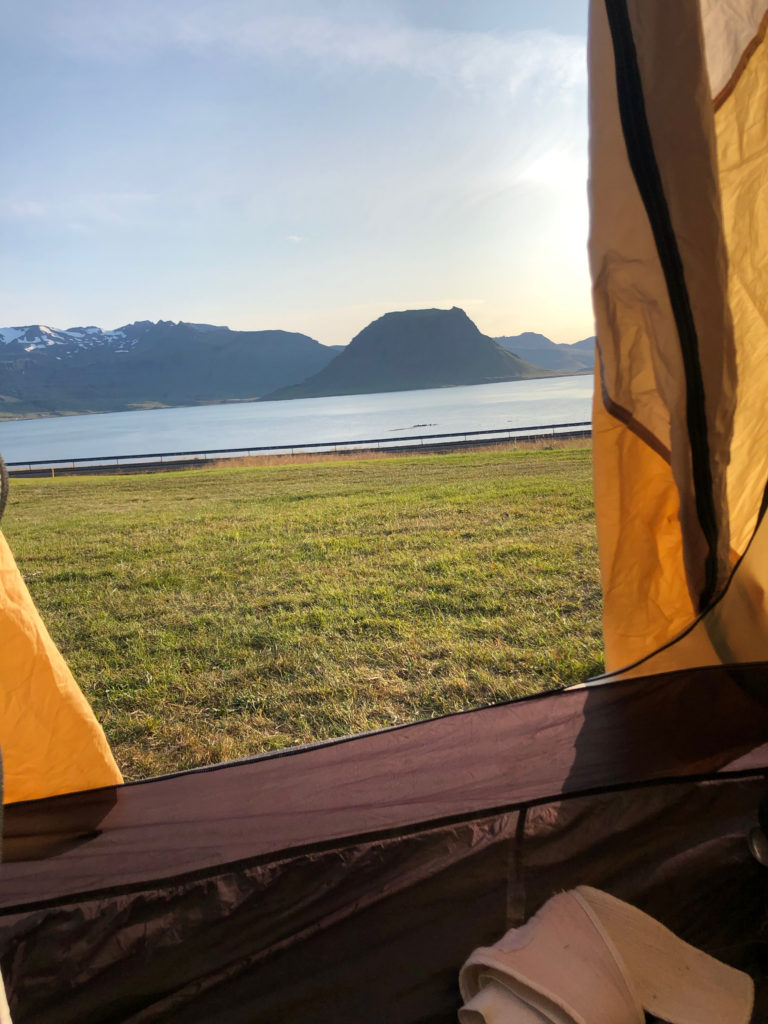
For breakfast, lunches and snacks, we went to a grocery store every day or two and purchased fruit, vegetables, Skyr (an Icelandic yogurt that was wonderful), wraps that were safe, ham, bacon, cheese, Ritz crackers, etc. Mainly we were purchasing foods that didn’t have many ingredients and/or weren’t processed. Iceland is in the European Union, and the labeling was very good. Some labels were in English, and when they were in Icelandic, I had my Google translate app that allowed me to take a picture of the label and get the ingredients translated. I did look up the Icelandic names for all of my food allergens prior to the trip so that I could be prepared to read those on any label. Once we found a safe brand of wrap, for example, then we’d always look to purchase it in the next grocery store as we traveled around the country.
We rented two gas stoves, two coolers, and a table from a camping store in Iceland, but we brought many other items with us like our sleeping bags, tents, pans, plates and utensils in our backpacks. A few mornings when the weather was being difficult to be able to cook an omelet, we opted for fruit and Skyr instead and hit the road to see the sights.
Sleeping in Hotels and Airbnb’s
We stayed in a Hotel the first night we arrived in Iceland. It was kind of a funny situation in that I booked the room and neglected to notice that there was only one queen sized bed, and not two twins as I had assumed from the picture. So, my Dad and I got to be really cozy the first night in Iceland!
I have filters in my searches for hotels and Airbnbs to ensure that the places I stay have no pets, but that really wasn’t an issue in Iceland. We didn’t see any tourists with their own pets, however there were some dogs owned by store owners, but we didn’t see any in the Airbnb’s and hotels we stayed at.
One night, about halfway through the trip, we got rained on all night. Then the next day, we got soaked visiting a waterfall. All of our camping gear was wet, and all of our clothes too! In the moment, we were entirely miserable and ready for a night to dry off, so at the last minute we decided to get a hotel room. The cheapest room we could find was $260 US dollars, and we were grateful to find it! We needed it for our physical comfort, but also for emotional comfort after being wet and freezing.
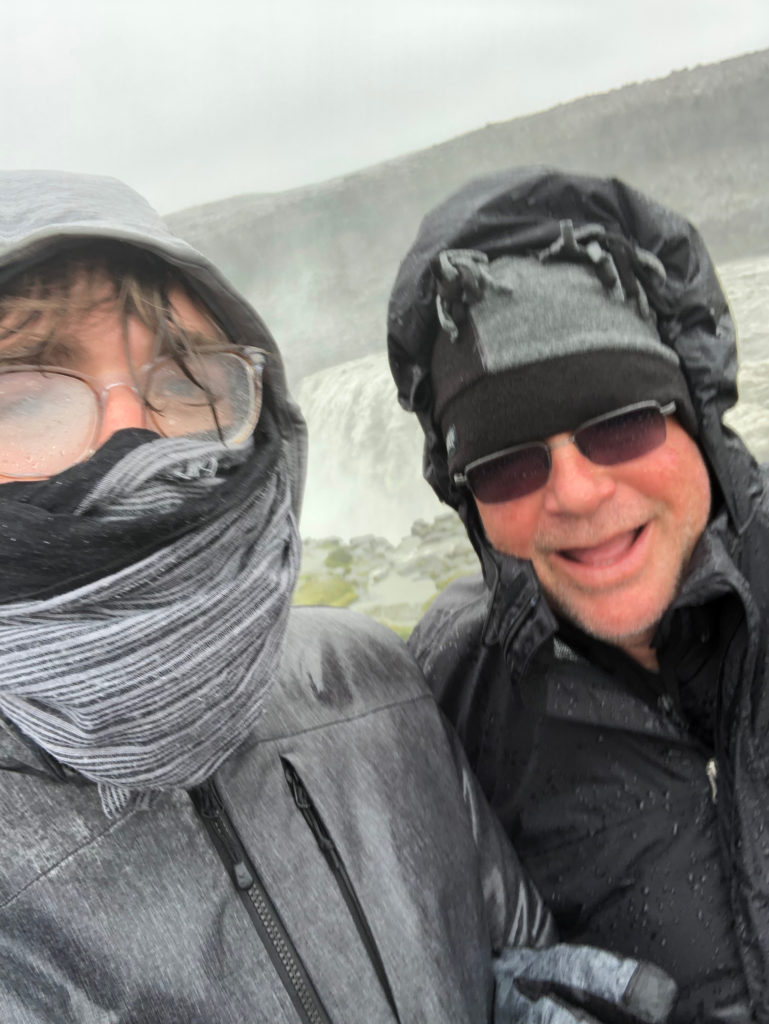
The only other time we stayed at an Airbnb was the last two nights before we left to come back home. So most of our nights were spent camping, sleeping on air mattresses and enjoying the quiet solitude.
WiFi in Iceland
We purchased a mobile hot spot through our rental car company, which was great. Even when we only had 2G, we could at least communicate by calling using cellular over Wifi if we needed to make a call. Most of the time we had 4G. Cell service was available throughout the country. There are also many Wifi hotspots in Reykjavik, the capital city, but we rarely found one while in smaller towns around the country.
Seeing Iceland
We spent our days in our rental Toyota RAV4 driving from one beautiful location to another. We would drive hundreds of miles every day, starting from Reykjavik and traveling counter-clockwise around the island. We camped out on the beach one night, and since the daylight lasted until 10 at night, we got to enjoy the scenery even more. We drove through numerous fingers on either side of fjords around the island and got to see waterfalls everywhere.

We’d get out of the car to hike into locations to see more scenery, and then choose where we wanted to camp at night as long as it was a designated camping site. Many times we were the only campers, which was great.
It was just the best trip ever. My Dad and I laughed, talked and walked throughout the two weeks.
Trip Suggestions for You
If you’re thinking about a trip to Iceland, I’d say DO IT! Here are some suggestions I have:
- Expect to spend a lot of money. Reykjavik is at least $100 US dollars a day. Around the country, you will likely be spending at least this much as you experience the country! Hotels or Airbnb’s will likely cost $300 US dollars a night.
- Learn the Icelandic words for your allergens
- Get the Google translate app on your smartphone
- Get to know some of the staple dishes (like Smørrebrød) so that you can manage your allergens
- Ask for help if you need it. Icelandic people are incredibly nice!
- Have a great time!
